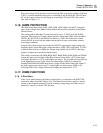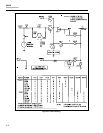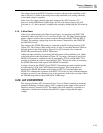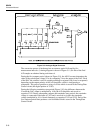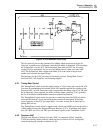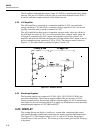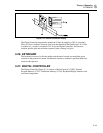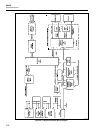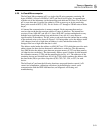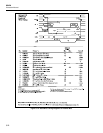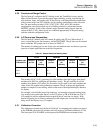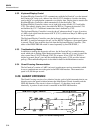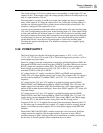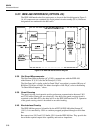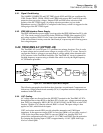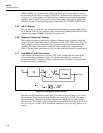
Theory of Operation
DIGITAL CONTROLLER
5
5-21
5-28. In-Guard Microcomputer
The In-Guard Microcomputer (µC) is a single-chip Z8 microcomputer containing 4K
bytes of ROM, 144 bytes of RAM, a UART, and four 8-bit I/O ports. It communicates
with the rest of the instrument via the internal bus and dedicated I/O lines. The In-Guard
µC is reset when pin 6 is pulled low either by C204 at power-up or by the watch-dog
timer in the custom A/D IC (U101). Pin 6 is tied to +5V through a 100 kΩ resistor inside
the µC.
All internal bus communication is memory-mapped. Each component that sends or
receives data on the bus has a unique address or range of addresses. The internal bus
consists of lines AD0-AD7 and A8-A11. Lines AD0-AD7 are time-multiplexed to carry
both the least-significant address byte and the data. Lines A8-A11 carry the most-
significant bits of the address. The µC writes to and reads from the internal bus according
to the read and write cycles shown in Figure 5-14. During either cycle, the address strobe
(AS) changes from low to high when an address is valid, and the data strobe (DS)
changes from low to high when the data is valid.
The address strobe latches the address on AD0-AD7 into U219 which then provides static
address inputs for those devices that need it while data is on the bus. The data memory
line (DM) divides the address space between program memory (U222) and data memory
(all other devices on the bus). The data memory address space is further divided between
the calibration memory (U220) and the remaining devices by A11. The addresses of the
remaining devices are decoded from A8-A10 by U208, which combines the address with
the data strobe (DS) to provide a chip select (CS0, CS2, CS3, CS4, or CS7) for each
device.
The In-Guard µC performs the following functions: range and function control; A/D
control and computation; calibration corrections; keyboard/display control; serial
communication with the IEEE-488 Interface; and diagnostic self-testing and
troubleshooting.



